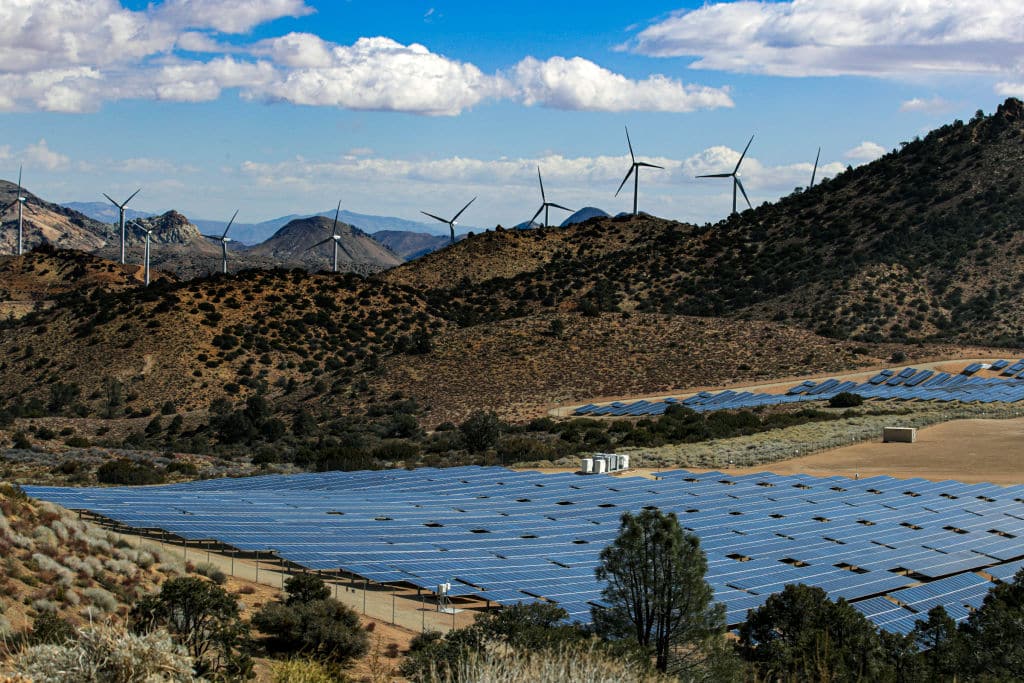Products You May Like
A wind farm and solar power plant in the Tehachapi Mountains on March 23, 2021 in Kern County, California Irfan Khan / Los Angeles Times / Getty Images
 Why you can trust us
Why you can trust us
Founded in 2005 as an Ohio-based environmental newspaper, EcoWatch is a digital platform dedicated to publishing quality, science-based content on environmental issues, causes, and solutions.
By Jake Johnson
A new analysis of federal data shows that wind and solar alone could generate more electricity in the United States than nuclear and coal over the coming year, critical progress toward reducing the country’s reliance on dirty energy.
The SUN DAY Campaign, a nonprofit that promotes sustainable energy development, highlighted a recently released U.S. Energy Information Administration (EIA) review finding that renewable sources as a whole—including solar, wind, biomass, and others—provided 22.6% of U.S. electricity over the first 10 months of 2022, a pace set to beat the agency’s projection for the full year.
“Taken together, during the first ten months of 2022, renewable energy sources comfortably out-produced both coal and nuclear power by 16.62% and 27.39% respectively,” the SUN DAY Campaign noted Tuesday. “However, natural gas continues to dominate with a 39.4% share of total generation.”
Learn More About Solar Power
The new EIA figures show that electricity output from solar alone jumped by more than 26% in the first 10 months of last year. In just October, the SUN DAY Campaign observed, “solar’s output was 31.68% greater than a year earlier, a rate of growth that strongly eclipsed that of every other energy source.”
Ken Bossong, the campaign’s executive director, said that “as we begin 2023, it seems very likely that renewables will provide nearly a quarter—if not more—of the nation’s electricity during the coming year.”
“And it is entirely possible that the combination of just wind and solar will outpace nuclear power and maybe even that of coal during the next twelve months,” Bossong added.
The encouraging data comes amid the broader context of U.S. failures to sufficiently accelerate renewable energy production and phase out fossil fuel use, which is helping push greenhouse gas emissions to record-shattering levels globally.
Gas production, a major contributor to highly potent methane pollution, likely broke an annual record in the U.S. last year, according to the latest federal data. One recent analysis found that the U.S. is currently pursuing more new oil pipeline capacity by length than any other country.
The Climate Action Tracker (CAT), a site created by a group of scientists to analyze nations’ emissions targets and progress, rates the U.S. as “insufficient” overall, arguing the country’s “climate policies and action in 2030 need substantial improvements to be consistent with the 1.5°C temperature limit.”
On the positive side, CAT welcomes the recent passage of the Inflation Reduction Act (IRA), a law that’s set to boost the U.S. build-out of renewable energy infrastructure.
“However, while the largest share of the IRA is directed to clean technologies, it also includes several concessions for the fossil fuel industry such as requiring minimum acreages of public lands for drilling leases,” CAT notes. “These concessions contradict President Biden’s promise on his first day in office to ban new oil and gas drilling on federal lands.”
Reposted with permission from Common Dreams.
Subscribe to get exclusive updates in our daily newsletter!
By signing up, you agree to the Terms of Use and Privacy Policy & to receive electronic communications from EcoWatch Media Group, which may include marketing promotions, advertisements and sponsored content.
